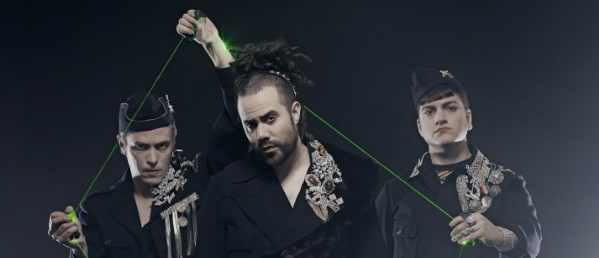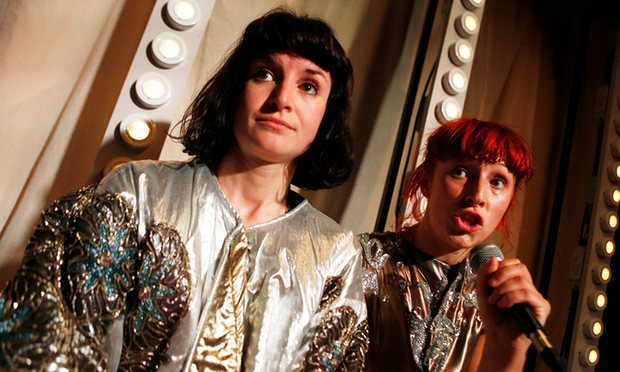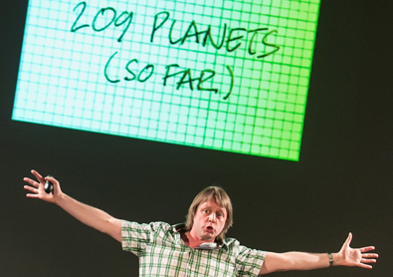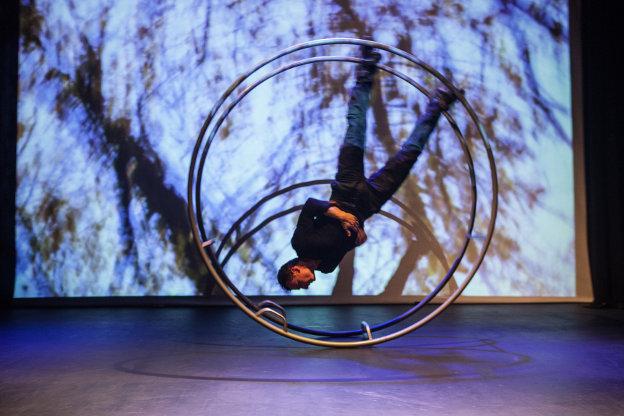Sirques Alfon channel the spirit of Mr Motivator – in a disco, with lasers, trapped in a computer game. On speed. A gloriously manic and resolutely bizarre celebration of life and individuality, I am Somebody is vastly entertaining and hugely engaging: a party that you don’t want to end and which you’re very happy to be at.
Martin Ostman, Erik Rosales and Hendrik Strindberg lead us down a rabbit hole and into a wonderland of music, rhythm, sound and light. Dressed in jazzy pastels, they begin by orchestrating vibrant songs of spiritual revolution, bopping along in rhythmic frenzy. Behind them is a screen and the performance partly exists in the world of computer graphics, taking its form and style from the realm of gaming and playing in the gap between the digital and the hyper-real. It is shiny and electric, but also very live and purely human.
Two of the performers take part in a boxing match set against the ubiquitous Japanese temple on the screen behind them. They fight against the frame of the screen, each hit producing ripples in the frame of the game. Their movements are strong, expertly choreographed, and precise. Recording one of the voices in the audience, another of the performers creates a live track in which this voice is mixed, integrated and given graphics; a bespoke creation, perhaps, for a karaoke parlour somewhere in Japan.
In another moment, a performer moves with strong, robotic grace – in synch with a soundtrack of clicks, whirrs and functionality. It is hugely skilful and completely mesmerising. A different sequence sees the performers toying and manipulating lasers with a level of unfeasible ease and hypnotic dexterity. A drummer builds an invisible drum kit, filling in the gaps in reality with his mimed strikes, hits and taps. Each and every sequence showcases an exceptional level of skill and pure, unbridled imagination.
They certainly are something, and somebody – then they pull out their selfie stick and we are all somebody too. They take selfies with us, teach us a variety of movements, which they – unknown to us – film. They show us back a sequence in which we are all moving in perfect time to the soundtrack, in block formation, our moves being mixed to the disco-electric tones of the track. We are now part of their screen and part of their world. It is a brilliant moment and every audience member watches themselves – and each other – with joyous revelation.
Brilliantly non-sensical and liberated from any narrative convention – or indeed any convention at all – Sirqus Alfon propel us through a world of the sublime and the fantastical, navigating us through their own world of positive affirmation and joy, with total physical mastery and prowess. Fresh, quirky and joyously anarchic.
Sirqus Alfon: I am Somebody is presented at the Edinburgh Fringe by Aurora Nova.







